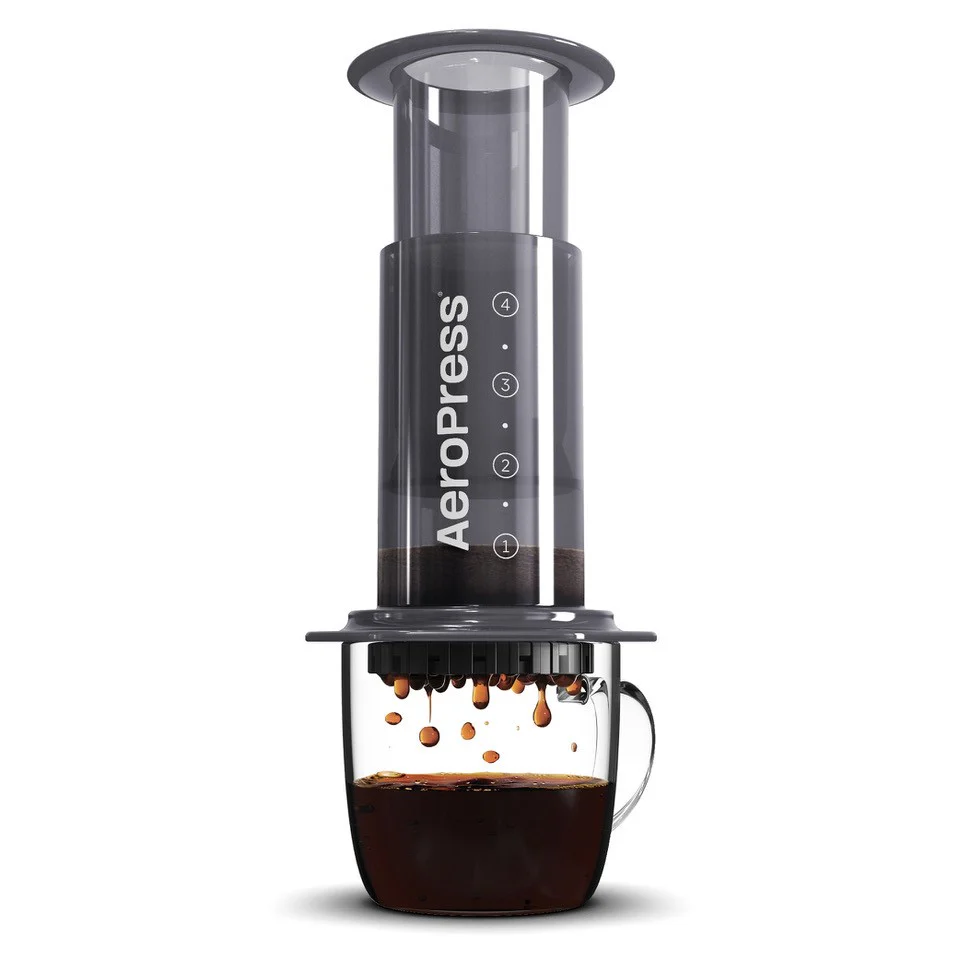This recipe produces good cups fairly consistently with a wide variety of light- and medium-roasted beans (for dark roasts, see this similar recipe). All that is needed is an AeroPress, Prismo cap, hand grinder, timer (e.g. phone), and a way to heat water. I use it frequently at work, in hotel rooms, in vacation houses, etc. It can even be used with pre-ground coffee (as a last resort, of course 😀).
Recipe:
- Measure out coffee:
- If a scale is available, use 17g to 18g of beans or ground coffee. If I’m brewing at the office, sometimes I’ll weigh out my beans ahead of time at home and bring them with me.
- Otherwise, use 1 heaping AeroPress scoop of beans or 1 level-to-slightly-heaping AeroPress scoop of ground coffee. For a stronger cup, a little more can be added.
- Heat water to at or near boiling using whatever method is available (microwave, electric kettle, drip coffee maker, camp stove, etc).
- Set JX to grind setting 16, or 48 clicks, and grind the beans. The setting can be tweaked as needed, but I’ve found that it works well for most beans I’ve brewed with this method. It’s at the fine end of the “AeroPress” range on the JX grind chart.
- Set the AeroPress up with the Prismo cap, metal filter, and (optionally) 1 paper filter for a sediment-free cup. I typically don’t bother rinsing the paper filter.
- Add grounds to AeroPress
- If a scale is available, set everything on it and zero it out
- Start timer (e.g. phone stopwatch app)
- Bloom: Pour 2x-3x weight of coffee, or enough to completely cover the grounds. Stir vigorously back and forth several times using the AeroPress stirring paddle. Steep until 0:45.
- Pour to 250g, or to within about 0.25″ of the top of the AeroPress cylinder.
- Stir back and forth 6 to 8 times with the paddle
- Take AeroPress and mug off the scale (if used)
- Steep until around 02:45 (give or take)
- Stir back and forth 6 to 8 times again
- Insert plunger and press slowly into the mug
- Let cool and enjoy
Tip: After the initial bloom, to prevent drips, I leave the stirring paddle in the AeroPress cylinder until after the final stir. When pouring the water, the paddle can also be used to help distribute the water over the grounds to make sure they all get wet before the cylinder fills up. This is easiest to manage with a gooseneck kettle.
